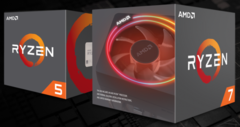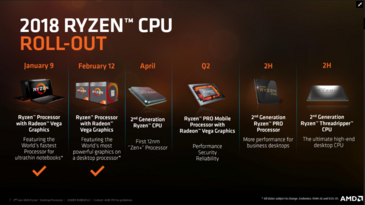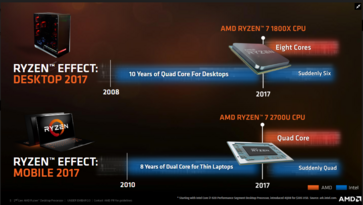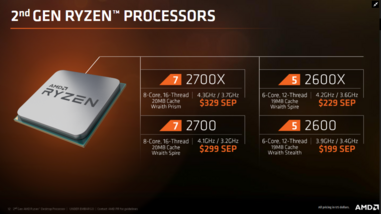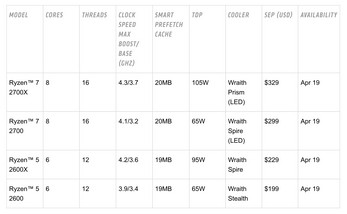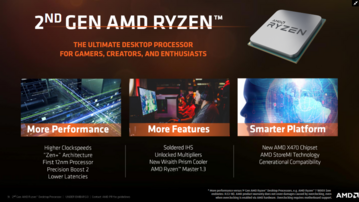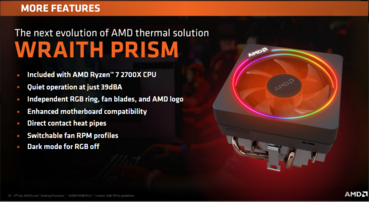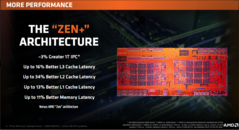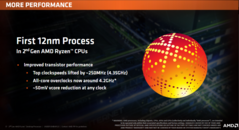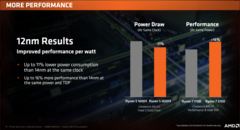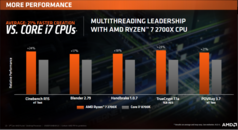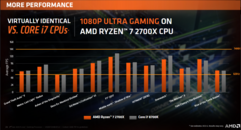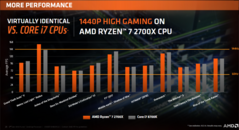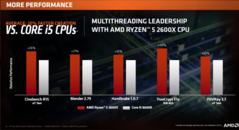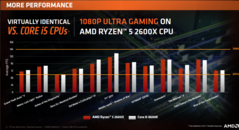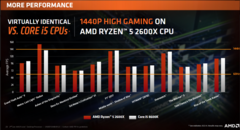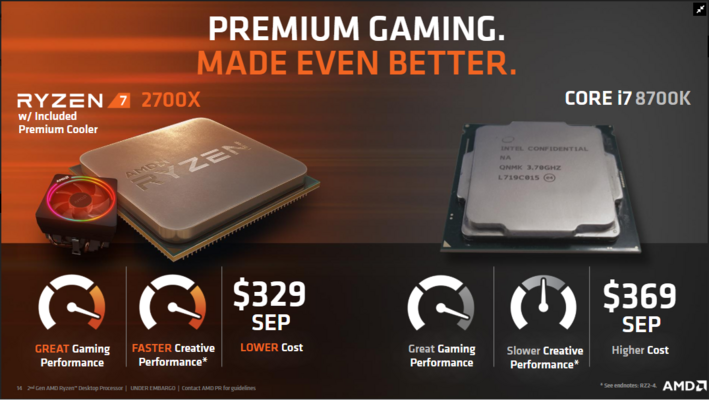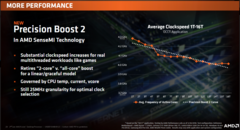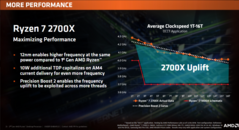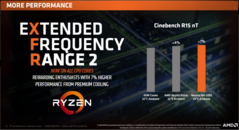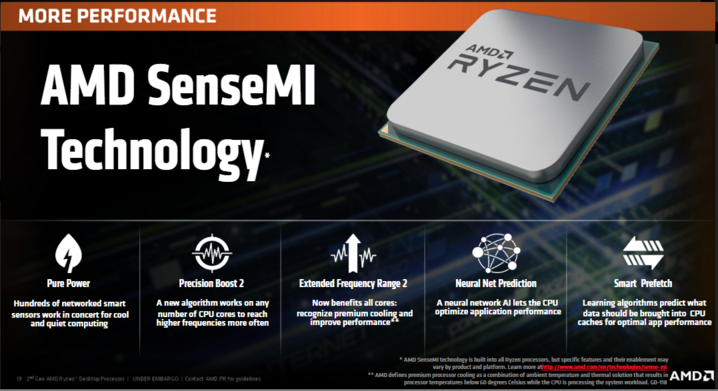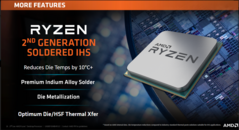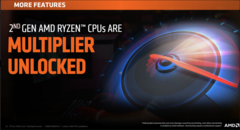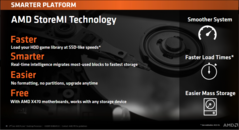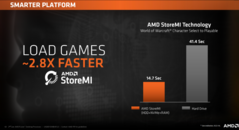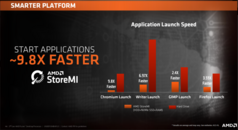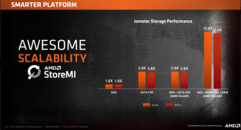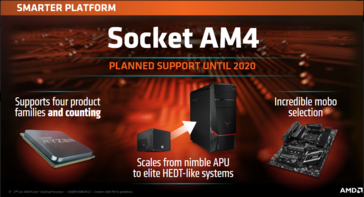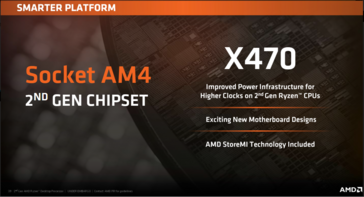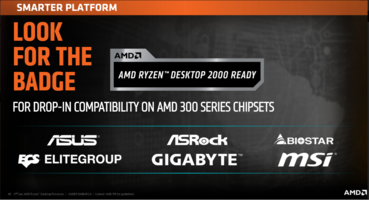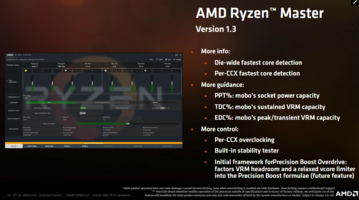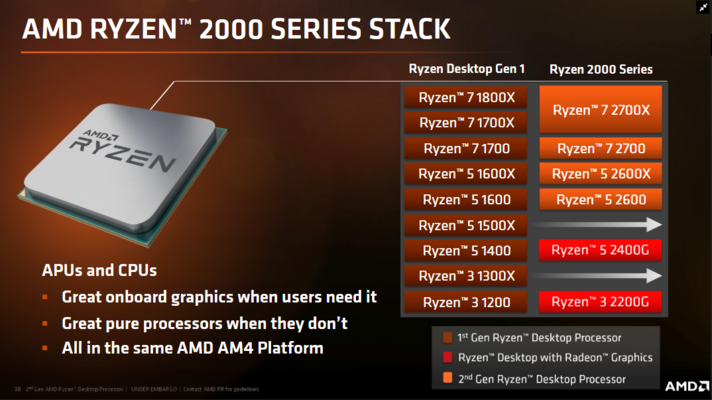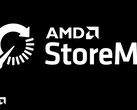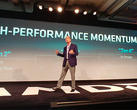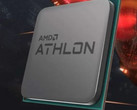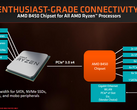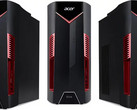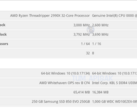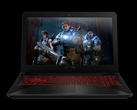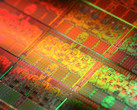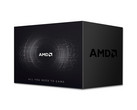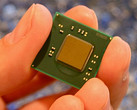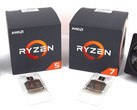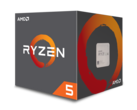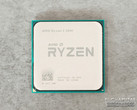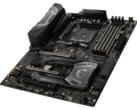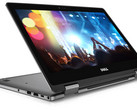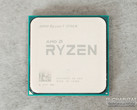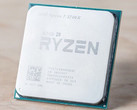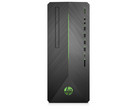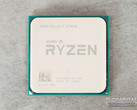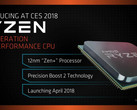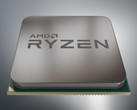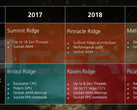Introduction
AMD has had a successful run against Intel with the Ryzen CPUs in 2017 and had both the industry and customers take notice. In fact, during the keynote, AMD took a jab at Intel and said that the popularity of the 1st gen Ryzens literally forced Intel to innovate in multi-threaded performance both in desktop and mobile. When we first started learning about the future roadmap for Ryzen, we came to know about the 2nd generation Ryzens codenamed 'Pinnacle Ridge' and the possibility of seeing improved clocks and IPCs. Well, AMD has now made the 2nd gen Ryzens official and we are glad that they seem to live up to the promise.
Apart from the 2nd gen Ryzens, the Ryzen Pro and Ryzen Threadripper will see the light of the day sometime in 2H 2018. With the 2nd gen Ryzen chips, AMD now has an entire catalog of CPUs catering to almost every use case. The new Ryzens are based on the Zen+ microarchitecture that belongs to the 'Optimization' phase of AMD's Inflection-Optimization cycle or semi tick-tock cycle. We will talk about Zen+ in more detail shortly. The new CPUs bring along new capabilities via the X470 chipset and continue to be compatible with all AM4 socket motherboards — past, present, and future. Improvements in overclocking and introduction of technologies like SenseMI means that Zen+ has more to offer than just speed bumps. So without further ado, let's delve into AMD's keynote and understand how the 2nd gen Ryzens fit into the enthusiast CPU market and how they stack up against their Intel equivalents.
The 2nd Gen Ryzen family
The 2nd gen Ryzen family has four CPUs. The high end Ryzen 7 series has the 2700X and the 2700. Both are 8C/16T parts and differ mainly with respect to clock speeds. AMD is shipping improved coolers with the CPU itself based on feedback from the community. The 2700X retails for US$329 and ships with the Wraith Prism cooler while the 2700 retails for US$299 and ships with the Wraith Spire unit. The 2600X and the 2600, on the other hand, are Ryzen 5 SKUs and AMD is positioning them as excellent value for money propositions. With a 6C/12T configuration, the Ryzen 5 chips start at US$199 for the 2600 and top up at US$229 for the 2600X including the appropriate coolers. We can see that the Ryzen 5 2600 will be a highly sought after CPU for both gamers and content creators on a budget given its competitive pricing over the Intel Core i5-8600K. It has also proved its competency in some early benchmarks too so AMD could have a winner with this SKU if many OEMs get onboard.
AMD has incorporated improvements in three main areas in this generation covering performance, features, and some additional smart features that are designed to work with the X470 chipset. We've been hearing about Precision Boost 2 and lower latencies for quite some time and we now get to learn more about them. Of course, while older B350 and X370 motherboards will be happy to house the new Ryzens with a BIOS update, the X470 chipset in conjunction with the AM4 socket really helps in harnessing the full potential of these CPUs.
The Zen+ microarchitecture
As discussed earlier, Zen+ is an optimization over the original Zen microarchitecture. According to AMD, Zen+ brings with it significant improvements in single-thread IPC and reduced latency across all caches when comparing a Ryzen 7 2700X with a Ryzen 7 1800X. Similar results were also observed in SiSoftware's benchmarks last month, wherein the Ryzen 7 2700X was reported to sport a 6-8% reduction in cache and memory latency and increased cache and memory transfers over the Zen-based Ryzen 7 1700X. Zen+ also marks the first 12nm fabrication process for desktop CPUs leading to increased clocks and more headroom for overclocking. AMD also claims higher power efficiency and performance at the same clock and TDP vis-à-vis a 14nm process.
Performance Comparisons
Coming to the real meat of the story — performance comparisons with equivalent Intel CPUs. We have been seeing the Ryzen 7 2700X and the Ryzen 5 2600 take on the Core i7-8700K and the Core i5-8600K respectively in initial benchmarks and have proven themselves to be worthy contenders. The Ryzen 7 2700X, for example, showed anywhere between 15-20% higher scores than the Core i7-8700K in Cinebench and x264 benchmarks while the Ryzen 5 2600 showed a 10-25% lead over the Core i5-8600K in the same tests. AMD's results seem to largely corroborate with what has been observed elsewhere till date. In gaming, the Ryzen 7 2700X seemed to not differ by much when compared with the Core i7-8700K in terms of fps in FHD and 1440p. AMD did not show any 4K gaming results as the scores are likely to be affected by the GPU than the CPU itself. Similar results were shown by the Ryzen 5 2600X in comparison with the Core i5-8600K. Overall, AMD claims greater gaming and creative performance at lower prices compared to the competition. We would like to subject these chips to our own battery of tests and see how they stack up against other CPUs in our extensive database.
SenseMI, Precision Boost 2, and XFR 2
One of the main advancements in this generation is the evolution of AMD's Precision Boost and eXtended Frequency Range (XFR) technologies. Improvements to these technologies along with other algorithms for better prioritizing threads are being brought under the SenseMI umbrella. Precision Boost 2 gives the much needed clockspeed increase for high workloads. In this generation, Precision Boost 2 can boost clocks across all 8 cores in the 2700X in a manner that is closer to a theoretical linear curve. If you notice the first graph below, it is seen that Precision Boost 2 is able to hold the 4.1 GHz boost clock between 5 to 9 threads consistently — ideal for the way most games are coded. This means the GPU not withstanding, using an X470-chipset motherboard, a capable cooler, and of course faster DDR4 RAM along with the 2700X can help in achieving high frame rates. AMD also emphasizes the forward-looking nature of the AM4 socket (more on that in just a bit) in being able to deliver additional power to the CPU. It also showed a schematic comparison of the uplift that the 2700X is capable of compared to the Ryzen 7 1800X.
The other aspect of the boost story is XFR 2. XFR looks to opportunistically increase clocks based on the available headroom and cooling capabilities. In version 2, XFR now extends across all cores. Using the stock Wraith Prism cooler, XFR seems to enable a 4% increase in Cinebench R15 performance compared to a conventional 95W cooler under the same ambient conditions. Substituting that for the Noctua NH-D15S and a lower ambient temperature affords a 7% increase in Cinebench scores. Therefore, under appropriate cooling and ambient temperature conditions, expect the new Ryzens to show sustained higher clocks.
Other features
Other features include a soldered IHS negating the need to de-lid the CPU for enhancing cooling efficiency. Intel, which has been traditionally using a Polymer Thermal Interface Material (PTIM) for many generations now, is also rumored to take the Solder Thermal Interface Material (STIM) route starting with the 'Skylake-X' Refresh HEDT CPUs. It is good to see AMD taking a lead in the consumer segment in this aspect. As has been known already, all 2nd gen Ryzens are multiplier unlocked and offer great overclocking potential.
Intel offers Optane memory that sort of acts as a bridge between a traditional HDD and RAM to accelerate filesystem operations. With the 2nd gen Ryzens running on X470 motherboards, AMD is offering StoreMI: an Optane equivalent. Unlike Optane, StoreMI does not require purchase of an add-on module but instead combines the existing DDR4 RAM, NVMe SSD, SATA HDDs, and even 3D Xpoint storage (read Optane) or a combination of HDD and SATA SSD to move slow file blocks to whichever is the faster storage device. It learns the user's habits and prioritizes the data to be moved to the SSD and RAM accordingly. To Windows, the whole combination just appears as a single disk and can be reversed at any time. AMD showed off some numbers reflecting how StoreMI helps in reducing file read and write times to speed up applications and games. While StoreMI is exclusive to X470 motherboards, those on a 300-series chipset can purchase the Enmotus FuzeDrive software, which essentially performs a similar function.
The X470 platform
While the 2nd gen Ryzens are compatible with existing X370 and B350 motherboards, it is the X470 chipset that allows the new chips to fully flex their muscle. AMD has designed a fairly future-proof socket when it debuted Socket AM4 with 1st gen Ryzen. The AM4 socket can accommodate almost all Ryzen CPUs and APUs (except Threadripper, of course) and AMD intends to support it till 2020. The AM4 socket spans right from the small form factor A300 to the flagship X470 chipset ensuring backward compatibility of successive CPU generations with existing motherboards. 300-series chipset based motherboards will still be on sale and from now on, these motherboards will sport a badge stating that they are compatible with the Ryzen Desktop 2000 CPUs.
AMD also talked about an update to their Ryzen Master software. Version 1.3 will offer more granular control and factors in motherboard specific features as well while overclocking. A future update will help in taking into account the available VRM headroom and will incorporate a relaxed vcore limiter for calculating Precision Boost.
Conclusion
In AMD's grand scheme of things, the Ryzen 2000 series will be an upgrade to the Ryzen 1000 series starting from the Ryzen 5 1600 and up. AMD is leaving the Ryzen 5 1500X and the Ryzen 3 1300X unchanged as it feels that the CPUs already satisfy the requirements of the demographic that uses these chips. The Ryzen 5 1400 and the Ryzen 3 1200 will see successors in the Ryzen 5 2400G and the Ryzen 3 2200G respectively and these come with integrated Radeon Graphics.
So to sum everything up, the 2nd gen Ryzens aim to continue their predecessor's legacy of challenging Intel's dominance in the desktop market. The future seems to be bright for AMD in the desktop computing space and with Zen2 coming in 2019, there has never been a better time to invest in a Ryzen platform. The greatly increased gaming performance along with stellar multi-core performance should propel the Ryzen 2000 series even farther than their older brethren and has the potential to make the Ryzens figure on top of every PC builder's shopping list.
Source(s)
AMD




